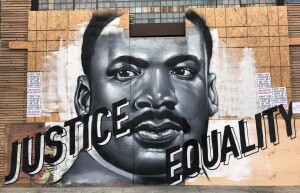If an artist creates great artwork but there is no one around to document it, did the art even exist? Millions of artists have been forgotten or erased from art history due to an inequality of prestige and to a lack of archiving. This is why art archives are one of the most important resources we have to preserve art history. But what happens when art is not something to own?
Over the turn of the century, street art has gone from a largely stigmatized practice to a form of art largely accepted and often supported by public and private enterprises. Murals are often created in the momentum of timely socio-political events and take on social or cultural discussions. This makes street art into an element of visual communication that is entrenched in today’s cultural logic. Still, street art is meant to temporarily become part of the cityscape, to be eventually erased. Smartphones and social media have bridged this limitation facilitating the recognition and dissemination of this artworks, as they can be instantaneously shared without spatial limitations. However, the overflow of pictures and information make the preservation of these fleeting works of art particularly difficult. It is because of this that many have seen the importance of documenting and archiving street art, both in digital and analogical form.
These archives vary in form and method, as archivists ask questions about the best ways to document them. Some focus on documenting art in a specific social and historical context, such as the Covid-19 pandemic and the BLM movement. Others diverge from photography as a method to capture art, and have opted to use virtual reality to get a better representation of the spatial magnitude of these murals. Archivists will keep on asking these questions to find the best way to preserve what has become an important part of culture in our everyday environment. For the time being it is important that we recognize the important job that is being done in trying to preserve these images for the future.


